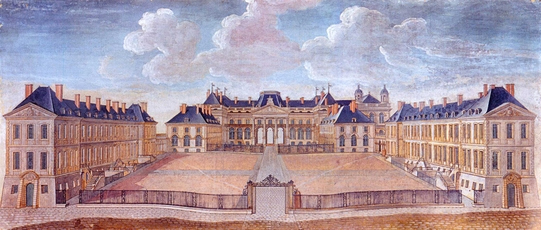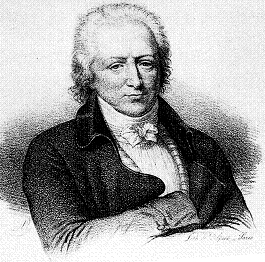The abolitionnist court at the Château de Lunéville (Meurthe-et-Moselle)
“You will know that Africans are not allowed to sell you prisoners of war; you will know that the Lords of the great fiefdoms of Guinea can not sell you their vassals, you will know that your money can not give you the right to hold a single man in slavery“.
Jean-François, knight and marquis of Saint-Lambert

The Château de Lunéville
Called the "Versailles of Lorraine", the Château de Lunéville became during the Enlightenment an important centre of intellectual animation receiving Voltaire, Montesquieu, Helvétius. From this court of Lunéville came the Chevalier de Boufflers, Saint-Lambert or Beauvau-Craon who, on the eve of the French Revolution, rallied the abolitionist movement of the Society of the Friends of the Blacks.
Independent duchy since the Middle Ages located between the Kingdom of France and the German Empire, Lorraine quickly asserted itself by human choices rather than geographical or cultural criteria.
In the heart of Europe, open onto Italy, Central Europe and France, Lorraine radiated very quickly beyond its limits through the impetus of Duke Léopold who rebuilt the Château de Lunéville, symbol of the ducal restoration of the duchy and the restored independence of Lorraine, after a long period of war and occupation.
“Enlightened” prince, seizing the nature of this “century of Enlightenment”, Prince Léopold encouraged the development of sciences and arts, action that was pursued by his successor Stanislas Leszczynski, dethroned king of Poland and father-in-law of Louis XV.

The Château de Lunéville in 1750 - Castle Museum collection
During its reign, the Château de Lunéville became an epicentre of the diffusion of new ideas: Voltaire, Montesquieu, Helvétius stayed there. The relationships built in Lunéville continued in Paris. The actors of the Stanislas Court took now part in the sharing of ideas and acted in the political choices, which, against the fundamental criticism of the social order inherited from a religious vision of the world, preached an atheistic materialistic and naturalistic conception.
The first, Jean-François de Saint Lambert, hold court in Paris with Condorcet, the Abbé Raynal, La Condamine, and Buffon. He became friend with Diderot and d'Alembert, which led him to participate in the Encyclopaedia, then to write a series of anti-slavery works among which in 1787 Réflexions sur les moyens de rendre meilleur l’état des nègres ou des affranchis dans les colonies (reflections on the means to improve the state of the negroes or emancipated slaves in the colonies).

The Chevalier Stanislas-Jean de Boufflers
Prince Charles-Juste de Beauvau-Craon joined him at the French Academy in 1771. Their younger brother, the Chevalier Stanislas-Jean de Boufflers joined them in 1788 after having been the previous three years Deputy Governor of the colony of Senegal and the Island of Gorée, one of the centres* regrouping slaves, where he used his authority to try to put restrictions on the slave trade and to hinder the activity of slavers with whom he entered in conflict before returning to France on the eve of the Revolution.
In February 1788, Saint Lambert, Beauvau-Craon and de Boufflers were co-founders with Brissot, Condorcet and Mirabeau of the first French abolitionist society: the “Society of the Friends of the Blacks”.
From there, they got involved in the anti-slavery campaign, joined by their Lorrain colleague and deputy of the Estates General of 1789, the priest of Emberménil, the Abbé Grégoire who prolonged the fight of Boufflers went into exile in 1792, of Beauvau-Craon died in 1793 and of Saint-Lambert who saw the result of his fight with the abolition of 4 February 1794.







